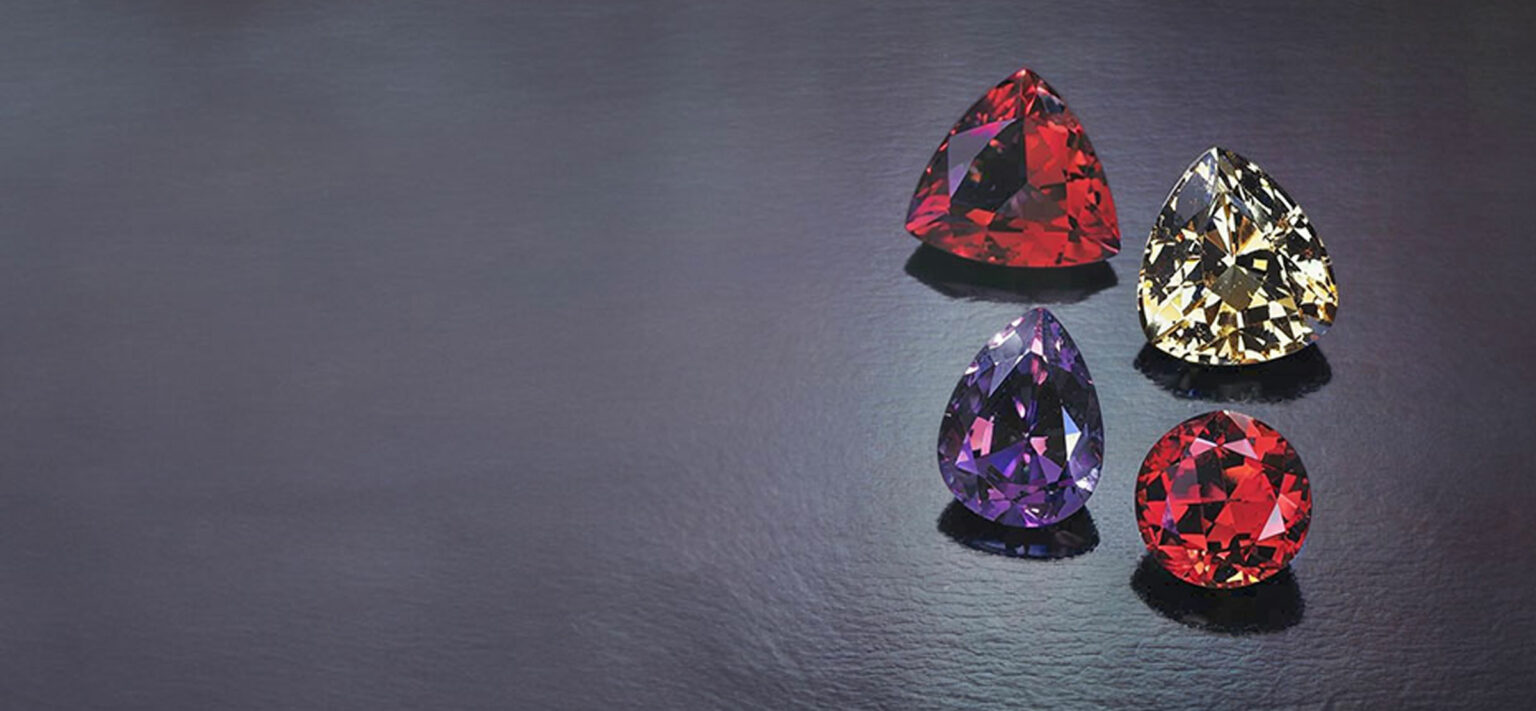Twenty-two miles from the Indian Ocean, at a small bend in Tanzania’s Umba River near the Kenyan border, you’ll find a unique two-mile radius corundum pipe that produces just about every color of sapphire imaginable. Since the pipe’s discovery in 1962, its distinctive stones have earned the name Umba sapphire.
Around 1965, Phoenix, Ariz.-based Naftco Gems, one of the first American firms to specialize in East African gems, and Naftule Fils in Switzerland, cornered the Tanzanian fancy sapphire market. Today the corner is still theirs—but far less so than it once was. As Umba sapphire has slowly come into its own, more and more dealers have begun to stock it.
Other firms would carry East African fancy sapphire if production were greater. But since the pipe has been worked to a depth of 100 feet and now requires expensive underground and shaft mining, supplies most likely won’t mushroom any time soon. Tanzania is a socialist country where the government of Tanzania now regulates export use of gem deposits. Mining ended at Umba some time in the 1970s or despite a sapphire mining at Umba shut down in 1980. So ordered a drift toward freer enterprise since 1984, mining companies still fear future expropriations.
The cloudy outlook for Umba sapphire mining shouldn’t worry jewelers. Not yet anyway. Of the multicolored produced until 1970, Naftco and Naftule Fils still sit on more than half the rough—said to be the lion’s share of Umba’s entire production—they bought. “Unless there is a run on East African fancy color sapphire, that’s enough,” says Naftco owner Ron Naftule, “to ensure ample supplies for decades.”
The idea of a run on Umba sapphire is still far-fetched, but not as much as it might have seemed five years back.
Umba’s corundum has benefited from the increased acceptance of fancy-color sapphire. Luckily for Tanzania, the climate of excess (or excellence) in salmon to peach colors, the shades most currently endearing to jewelry retailers. As important, it has given the world sapphires with hues and color changes that are found nowhere else. What follows is a quick glimpse of East Africa’s sapphire spectrum.
Padparadscha—Or Word Play?
Without a doubt, the most famous (some say infamous) Tanzanian fancy sapphires are its so-called “padparadschas.” Ever since Naftco and Naftule Fils began cutting and selling East African orange sapphires in the mid 1960s, they have done so mostly with this high-powered designation. Purists who believe that padparadschas proper hail only from Ceylon (Sri Lanka) have objected to this. As a compromise, Naftco now calls its stones “African padparadschas.” Why are dealers like Naftule forced to differentiate? Joshua Hall of Pala Properties International Inc., Fallbrook, Calif., explains that most have a strong tinge of brown that is absent from the Asian variety. Nevertheless, Hall maintains that some East African padparadschas have an indisputable right to be sold as such—regardless of origin. Karm Jain of Tsavo Madini, Costa Mesa, Calif., agrees with Hall but still sells such stones as “fancy pink-orange sapphires” only. “The trade doesn’t seem ready to accept the notion that bona fide padparadschas can come from Africa,” he says. Whether called “padparadscha” or not, many of these stones, even ones with some brown, have deep distinctive burnt orange and salmon colors that more than justify the $1,200-$1,800 per-carat prices quoted to us for fine stones in 1-2 carat sizes.
Haunting Deep Purples
East African sapphire has no peer in the purple range. The most superb of these stones have what dealer Colin Curtis, Gemological Exploration Corp., Tustin, Calif., describes as an “intense cherry-orchid purple.” Extremely scarce, jewelers can expect to pay as much as $1,000 per carat, perhaps a tad more, for fine purple sapphires in sizes up to 4 carats.
Alexandrite-like Sapphires
Many pink and purple fancy sapphires (and garnets) from East Africa change colors in diverse ways when taken from daylight to incandescent light. The predominant color change resembles that of alexandrite. Stones that look greenish to grayish blue in daylight turn a pronounced violet to cranberry red in incandescent light. Already these color-change sapphires have become a hot collector’s item. But dealers hope for an even brighter future for them with that small but determined segment of the public that wants, but cannot find or afford, fine alexandrite. At prices between $800-$1,500 per carat for better-at-fine 1-3 carat stones, this sapphire could become the best alternative to alexandrite.
Canaries, Golds and Yellows
Admirers of East African fancy sapphire, of whom there are quite a few, think most of these stones more than hold their own in side-by-side comparison with their Asian counterparts. This is especially true when it comes to yellow and golden sapphire, of which Tanzania was a significant producer. To give comparable depth of color, most yellow sapphires from Sri Lanka must first be heated. But East African stones have so much richness and fullness that they do not need color coaxing in the oven. What’s more, they are a bargain. Bright, clean stones with lemon to note-pad yellows (and often slight green) are quoted to us at $60-$100 per carat in 1-2 carat sizes. For deeper golden colors, expect to pay between $100 and $150 per carat in the same sizes.
In—and Out—of the Pink
When it comes to pink, East African fancy sapphire does not seem to compare favorably with Asian goods. First of all, East African production is dwarfed by that from Sri Lanka. Next, African production tends to be over shadowed with whitish tent tends to make them look overly sleepy. Possibly heat treatment could reduce this silk, but one of the strong points for East African sapphire that has been its “all-natural” status. Dealers like Naftule feel his heating would put them in too much of a bind as far as selling goes.
Rainbows on the Wrist
East Africa has produced large numbers of small-sized pastel-color fancy sapphires. Individually, most of these stones are too pale for jewelry use. But when combined, they have definite appeal. In fact, dealers have been assembling these pastel-color East African sapphires into inexpensive all-color undum “rainbow” assortments. Naftule reports strong sales of rainbow suites in round and square shapes between 2-4mm for between $50 and $100 per carat.
Please note: this profile was originally published in 1988 in Modern Jeweler’s ‘Gem Profiles: The First 60’, written by David Federman with photographs by Tino Hammid.
The East African sapphires shown in the header image are courtesy of Tsavo Madini Inc., Costa Mesa, Calif.






